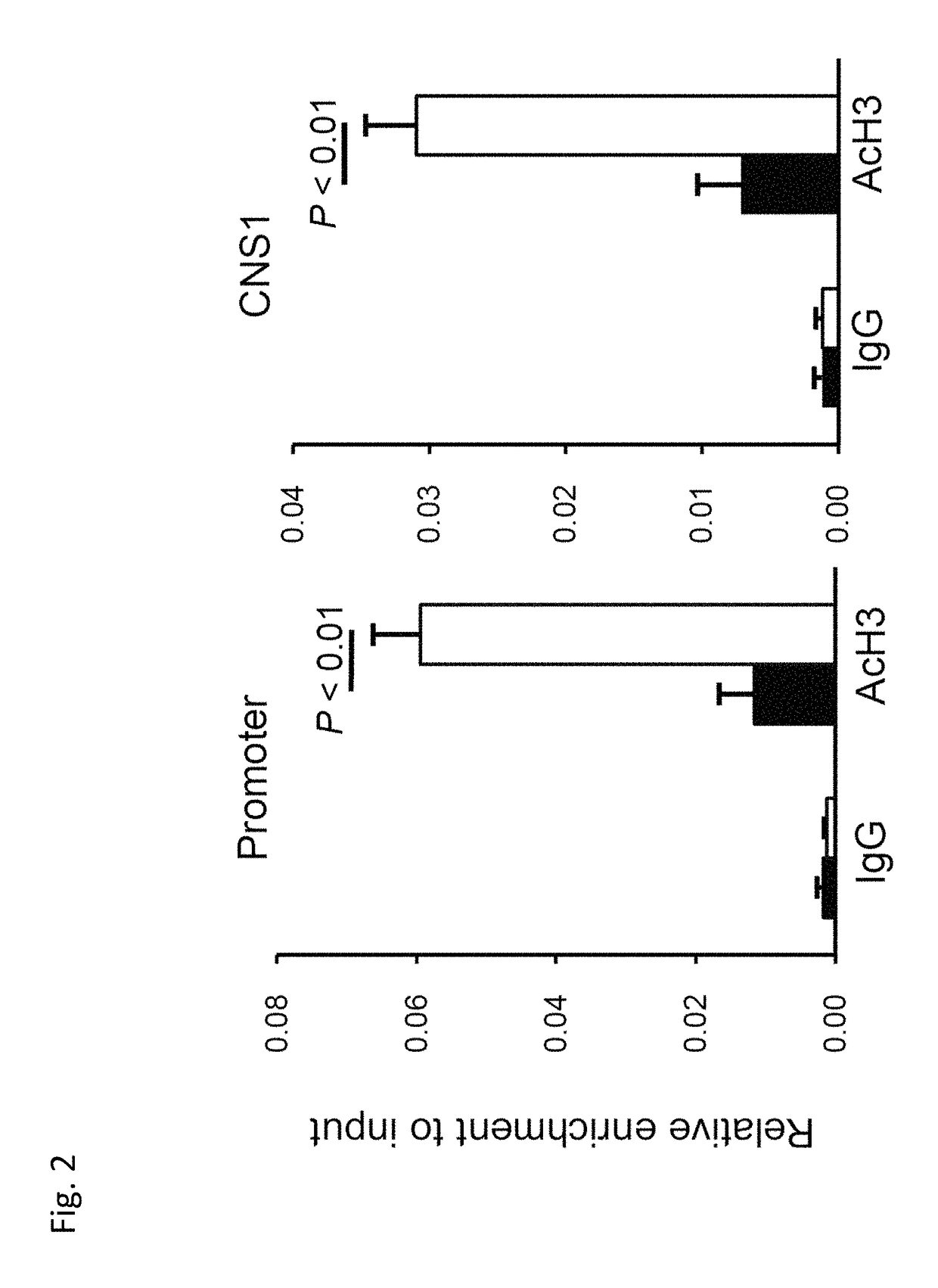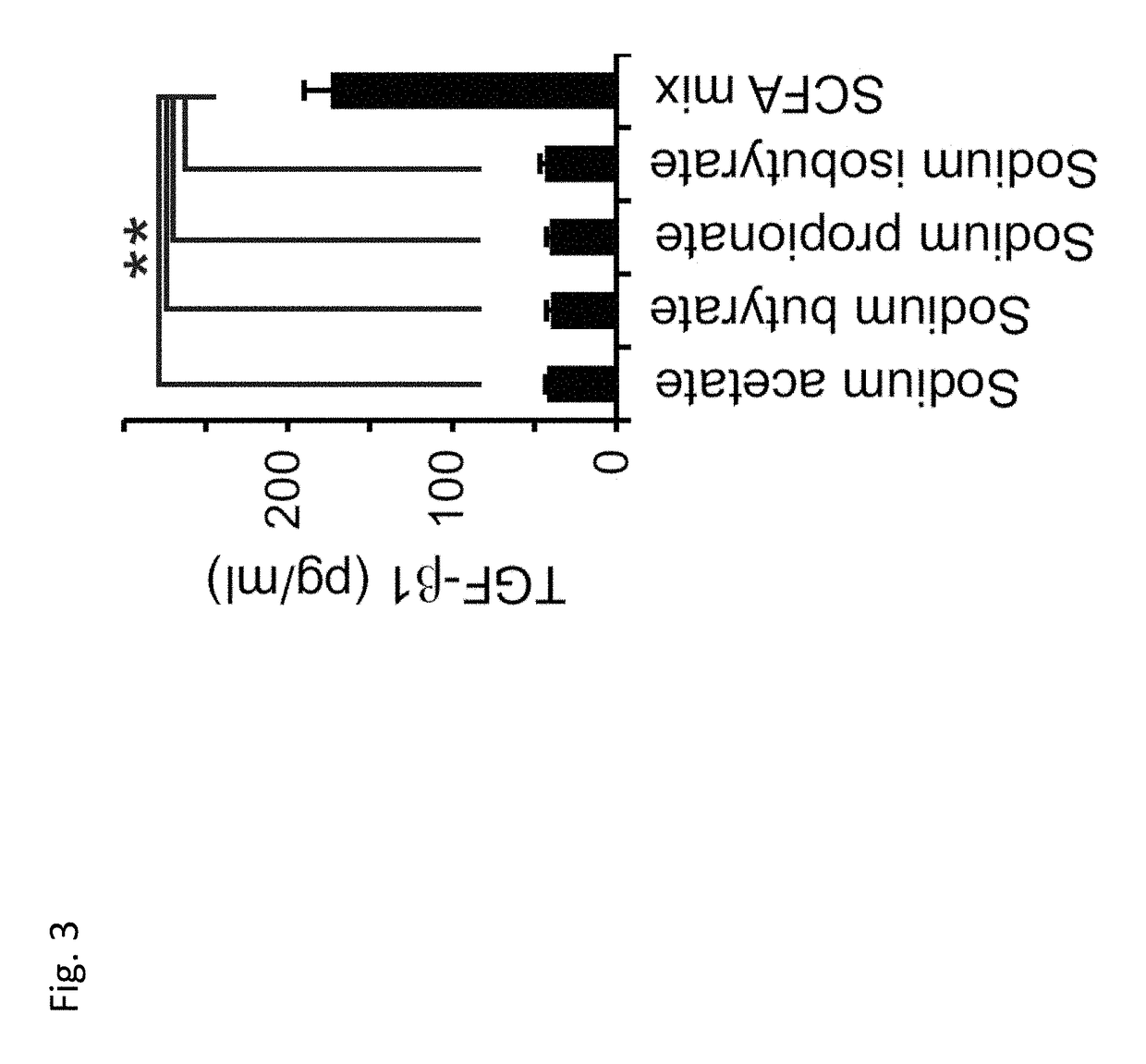Compositions containing combinations of bioactive molecules derived from microbiota for treatment of disease
- Summary
- Abstract
- Description
- Claims
- Application Information
AI Technical Summary
Benefits of technology
Problems solved by technology
Method used
Image
Examples
example 1
[0093]First, to gain mechanistic insight into the induction of Tregs by bacteria belonging to Clostridium Clusters IV, XIVa, and XVIII, germ-free mice were colonized with a cocktail of bacteria comprising bacterial strains belonging to Clostridium Cluster IV, bacterial strains belonging to Clostridium Cluster XIVa, and bacterial strains belonging to Clostridium Cluster XVIII (“Clostridium-colonized mice”). To identify metabolites potentially involved in Treg induction, the hundreds of metabolites present in the luminal composition of Clostridium-colonized, ex-germ free mice were painstakingly investigated with NMR-based metabolome analysis coupled with principal component analysis (PCA). This resulted in identification of short-chain fatty acids including acetate, propionate, isobutyrate, and particularly butyrate, as responsible for Treg induction. The influence of acetate, propionate, and butyrate on Treg induction in vitro was measured as follows: Splenic naïve (CD44loCD62Lhi) CD...
example 2
[0094]Second, to gain insight into the molecular mechanism of action by which butyrate induces Tregs, assessment was carried out to determine whether butyrate regulates gene expression in T cells. Chromatin immunoprecipitation (ChIP) was performed using MAGnify ChiP system (Invitrogen) according to the manufacturer's protocol. The assay showed that butyrate upregulated histone H3 acetylation in the promoter and conserved non-coding sequence (CNS) I in the Foxp3 gene locus (FIG. 2). Other molecules with histone-deacetylase (HDAC) inhibitory properties, such as trichostatin A, (N-(2-aminophenyl)-N′-phenyl-octanediamide), 2-(4-butoxyphenyl)-N-hydroxyacetamide. MS-275, suberoylanilide hydroxamic acid, and RG 2833 similarly can mediate the same effects on Tregs.
example 3
[0095]Third, each short chain fatty acid identified, as well as a mixture of sodium salts of all the short-chain fatty acids identified, were tested for their ability to induce active form TGF-β1which is a property representative of the ability of a composition to induce tolerance, increase gut barrier integrity, and reduce inflammation. 0.5mM solutions of each individual short-chain fatty acid increased expression of active-form TGF β1 TGF 3 in culture supernatants of epithelial cell line HT29. Surprisingly, a 0.5mM mixture of sodium salts of acetate, propionate, butyrate, and isobutyrate increased expression of active-form TGF-β1 more than three-fold higher than any of the individual short-chain fatty acid solutions alone (FIG. 3). The concentration of active-form TGF β1 in the culture supernatants was measured by ELISA. These data indicates that the mixture of short-chain fatty acids cooperatively contributes to increased production of active-form TGF-β1.
PUM
| Property | Measurement | Unit |
|---|---|---|
| Sensitivity | aaaaa | aaaaa |
Abstract
Description
Claims
Application Information
 Login to View More
Login to View More - R&D
- Intellectual Property
- Life Sciences
- Materials
- Tech Scout
- Unparalleled Data Quality
- Higher Quality Content
- 60% Fewer Hallucinations
Browse by: Latest US Patents, China's latest patents, Technical Efficacy Thesaurus, Application Domain, Technology Topic, Popular Technical Reports.
© 2025 PatSnap. All rights reserved.Legal|Privacy policy|Modern Slavery Act Transparency Statement|Sitemap|About US| Contact US: help@patsnap.com



